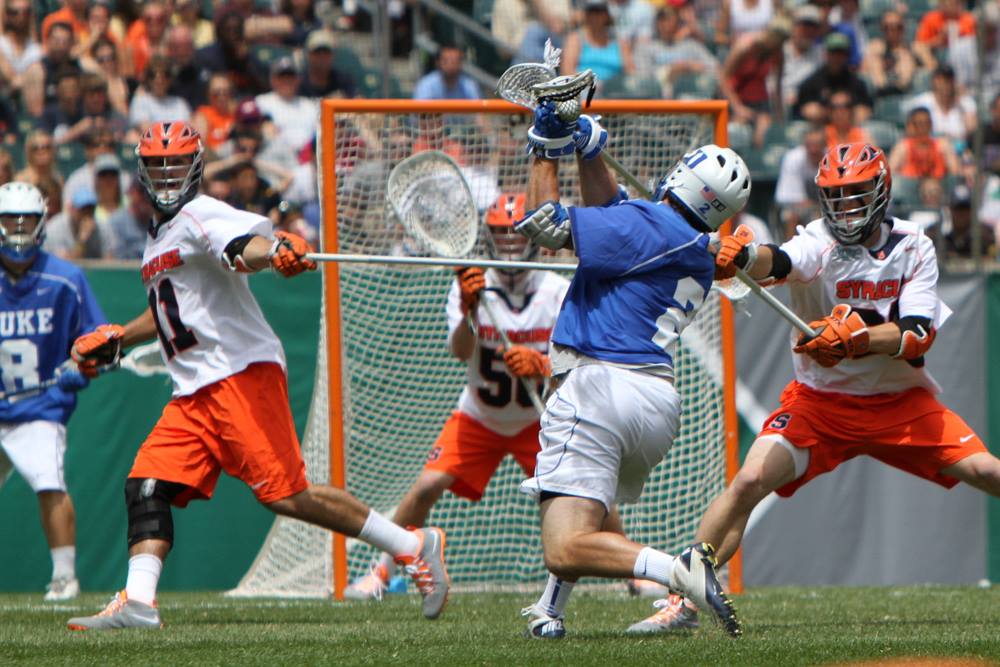By: Andrew Nakamura
When someone mentions the sport Lacrosse what comes to
mind? For me, I think about past games,
past practices, how to constantly get better and how I am playing one of the
oldest recorded sports ever played by the Native American people. However, I have noticed there have been a lot
of negative preconceived notions about the sport and its athletes since the
Duke Lacrosse Case that happened in 2006.
I am here to clear up and explain what really happened.
The date was March 13, 2006 where the Duke Lacrosse team
hired two strippers for a house party.
One of the dancers was named Crystal Mangum and she claimed she was
targeted and was raped in a bathroom by three of the players.[1] However statements from the law enforcement
stated from students who attended the party said, the players wanted white
strippers and that an argument went back and forth between the players and the
two strippers and the two left the house.
While leaving racial slurs were traded between Roberts, the other
Stripper with Mangum, with a player and drove off.[2] Roberts then called police and reported the
party because she was called a racial slur.
While in the car the two women began to argue and Roberts had to go to a
local supermarket and find a security guard to remove her from her car, this is
when 911 was dispatched and Mangum was questioned.[3]
DNA test were taken from 46 of the 47 lacrosse players
because Mangum said she was sexual assaulted by white players, the 47th
was an African American player. “DNA
testing failed to connect any members of the Duke University men's lacrosse
team to the alleged sexual assault of an exotic dancer, attorneys for some of
the players said Monday. Citing DNA test
results delivered by the state crime lab to police and prosecutors a few hours
earlier, the attorneys said the test results prove their clients did not
sexually assault and beat a dancer hired to perform at a March 13 team party.”[5]
A little over a year later, North Carolina Attorney
General Roy Cooper declared that the players involved with the rape case were
innocent[2] and that the Mangum falsely accused the Lacrosse team of rape. This whole case cost the Duke Lacrosse its
2006 season and the head coach of the time step down. “The NCAA has granted Duke's request for an
extra year of eligibility for its men's lacrosse players following rape
allegations that led to the cancellation of much of last season.”[4] In the start of Spring 2007, Duke would go on
to be seated as number 1 in the NCAA and went to the championship where they
lost to John Hopkins University 12-11.
I hope people take away that these players did not
sexually assault someone and that the sport of lacrosse does not dictate how
someone acts.
[1] Charles Montaldo. “Duke Lacrosse Team Rape Scandal.”
http://crime.about.com/od/current/a/duke_lacrosse.htm
(accessed January 31, 2014).
[2] Susannah Meadows. “What Really
Happened That Night At Duke.”
http://www.newsweek.com/what-really-happened-night-duke-97835
(accessed January 31, 2014).
[3] “Duke Lacrosse Case Of False Rape Allegations.”
http://www.ejfi.org/Courts/Courts-24.htm
(accessed January 31, 2014).
[4] “NCAA to allow Duke players to reclaim lost
season.”
http://sports.espn.go.com/ncaa/news/story?id=2887146
(accessed January 31, 2014).
[5] “Attorneys: No DNA match in Duke lacrosse case.”
http://sports.espn.go.com/ncaa/news/story?id=2404002
(accessed January 31, 2014).


No comments:
Post a Comment